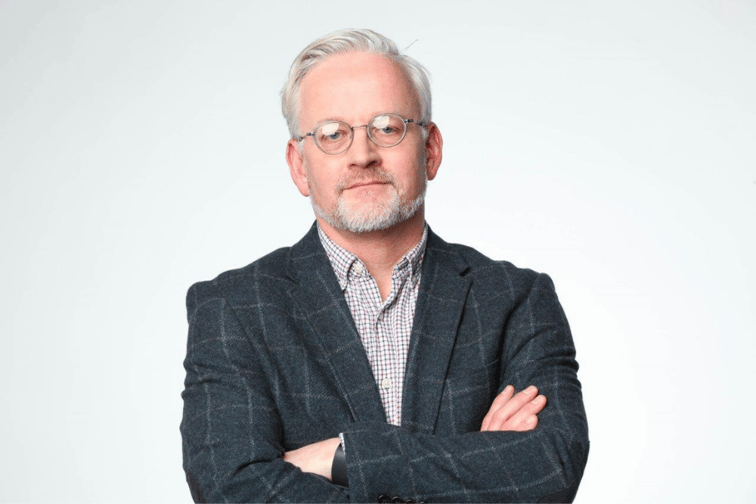

As per the lyrics immortalised by Meatloaf, “you’ve gotta learn to dance before you learn to crawl”. And Bart Patrick (pictured), chief revenue officer of the insurance software solutions provider Genasys has a similar message for the market as it faces the rapidly approaching spectre of Blueprint Two – “you’ve got to modernise before you can transform.”
Looking around the London market, Patrick noted that he has a number of concerns which ongoing conversations around Blueprint Two are doing little to assuage. Because while there is no doubt that the market really needs to do things differently, he said, the timing and the duration of the transformational changes being posited are troubling.
Some market players are talking about three-to-five-year timelines, he said, but how can an effective change programme operate under such a long time horizon? There are so many ever-evolving factors to consider - from economic changes, to market cycles, to regulatory changes, to cost programmes within individual businesses, to the changing nature of insurance itself. What a business is aiming for now is not necessarily what it will be focusing on in 18 months' time.
“The second thing that concerns me is how it's going to be paid for,” Patrick said. “Because the track record of the market… regardless of the fact that it actually is a good idea to do these things, is the prioritisation for spending. And the priority for spending within individual companies and brokers and such is on what’s going to increase their revenues and their bottom line… And I’m not entirely sure if we have a clear picture [of the value of these change programmes].”
While fully accepting that it is a good idea for the market to transform, he said, there needs to be more visibility about how this transformation will benefit market players – and, crucially, when that value will feed through. Because businesses can’t afford to wait five years for the benefits of Blueprint Two to trickle down to them. That’s not how businesses work.
Other concerns raised by Patrick include how this sizeable programme of change will be prioritised and he emphasised the need for businesses to take an iterative approach to their transformation – and consistently monitor whether they’re heading in the right direction. Cost is another significant challenge, he said, as having analysed the pattern of expense ratios across the market, he can see that for many businesses, their expenditure on transformation has yet to pay off dividends.
“If we are spending so much money on transformation, yet we're seeing so little in return in terms of moving the dial on expense ratios and operating costs, then what are we spending it on?” he said. “Are we spending on the right things? And are we spending it in the right way? And it doesn’t take a lot of work to find out that in many companies, this dial hasn’t changed.
“Globally, on average businesses are spending 4% of their GWP on IT but UK Plc is spending 6%, with more than half of that spent on keeping the lights on with legacy and transformation programmes etc. And what has occurred to me is that people in the London market are confusing transformation with modernisation. And transformation is a wonderful idea but you can't transform without modernization. You modernise first, then you look to transform.”
Patrick’s hypothesis is that the issue of inflated IT spend comes down to, “the cart and the horse being in the wrong order”. Companies have legacy platforms, he said, which underpin all the transformation that they do and it doesn’t matter how many interesting and innovative projects they engage in, the cost of keeping the legacy lights on is impeding meaningful transformation.
“My hypothesis is that we can spend all the money we like on transformation but until we modernise the basic technologies and systems within our industry, we're wasting our money,” he said. “And thinking about Blueprint Two, there’s goodwill in the market and I do think people want to make this happen. But do I wonder whether as a market, we are still trying to transform when we should be looking to modernise first.
“My advice to individual companies is to sort out your lot, get modernised, and then think about how we can transform the market. Because we're trying to transform a market that is running not at two or three different speeds, but 1000s of different speeds and everybody is running in different directions.”
Among Patrick’s key recommendations, he re-emphasised the need for insurance businesses to get the foundations of modernisation right before they start building the house of transformation. People are looking for a quick fix, he said, but all too often that only leads to investing in short-term solutions that are not fit for purpose.
“Think about where you want to go and what you need to get there,” he said. “Keep an eye on Blueprint Two to see where it’s going but chunk down your decisions. Chunk down your change programmes until they are something you can realistically achieve… It’s a curious time for the market. But there’s a lot of goodwill and great intentions – and there's some amazing thinking going on with this. But I think there’s also a lot of reasonable concern in terms of where to invest, how to invest and what to invest in. And those conversations need to be had as well.”
What are your thoughts on Blueprint Two? Please feel free to share your comments below.
